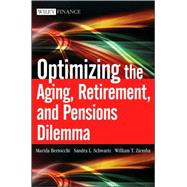
Note: Supplemental materials are not guaranteed with Rental or Used book purchases.
Purchase Benefits
What is included with this book?
Sandra L. Schwartz received her interdisciplinary PhD from the University of British Columbia in commerce, economics, and ecology. She has taught business policy, business and society, and topics in research and development and applied economics at Berkeley, UCLA, Tsukuba, UBC, and Simon Fraser. Schwartz designed programs and courses for the Open University of BC. She is the author of a number of books on energy policy, Japanese management and economy, and other topics, as well as numerous articles.
William T. Ziemba is the Alumni Professor of Financial Modeling and Stochastic Optimization (Emeritus), University of British Columbia. He is a well-known academic with books, research articles, and talks on various investment topics and a columnist for Wilmott magazine. Ziemba has visited and lectured at MIT, University of Chicago, Berkeley, UCLA, Cambridge, LSE, Oxford, and the ICMA Centre. He trades through William T. Ziemba Investment Management Inc. He has consulted for various financial institutions including hedge funds, pension, and other investment institutions.
Preface.
PART ONE The Aging Population: Issues for Retirement.
CHAPTER 1 Issues in Retirement.
1.1 Longevity and Changing Demographics across the World.
1.2 The Evolution of Retirement.
1.3 Provision for Retirement.
References.
CHAPTER 2 The Various Costs of Pensions: Macro and Micro.
2.1 Governmental Cost of Retirement.
2.2 Pensions and Capital Formation.
2.3 Regulating Corporate Pensions.
2.4 DC vs. DB: Shifting the Risks.
2.5 Freezing Pension Plans.
2.6 Where Do We Go from Here?
References.
CHAPTER 3 The Various Pillars of Retirement: Social Security, Company Pensions, Supplementary Pensions, and Private Savings.
3.1 Pillars of Retirement.
3.2 Reforming OECD Pensions.
3.3 Changing Role of Private Pensions.
3.4 Plans for Reforming Social Pensions.
3.5 Rethinking Pension Promises: Breaking the Fixed Link to a Monetary Value.
3.6 Intergenerational Risk-Sharing.
3.7 Conclusions.
3.8 Case Study: Public Sector vs. Private Pensions.
References.
CHAPTER 4 Asset Classes: Historical Performance and Risk.
4.1 Equities.
4.2 ETFs: Exchange-Traded Funds.
4.3 Bonds and Fixed Income.
4.4 The Bond-Stock Measure for Medium-Term Large Crash Prediction.
4.5 Hedge Funds.
4.6 Real Assets.
4.7 Housing as an Asset Class.
4.8 Gold and Other Commodities.
4.9 Private Equity and Related Assets.
4.10 Currencies.
4.11 Evaluation of Great Investors.
4.12 Fundamental and Seasonal Anomalies of Asset Returns.
References.
CHAPTER 5 The Current Economic Crisis and Its Impact on Retirement Decisions.
5.1 Household and Government Debt.
5.2 Were the Crash Models Helpful in Signaling the US and Worldwide 2007–2009 Crash?
5.3 The Subprime Crisis and How It Evolved.
5.4 Impact on Retirement Expectations.
5.5 Pensions in Trouble.
5.6 State Pensions.
5.7 Future ERP.
5.8 Future Inflation and Pensions.
References.
PART TWO Special Issues and Models.
CHAPTER 6 The Impact of Population Aging on Household Portfolios and Asset Returns.
6.1 Introduction.
6.2 The Empirical Evidence.
6.3 Models for Portfolio Choices and Life-Cycle Asset Allocations.
6.4 Conclusions.
References.
CHAPTER 7 A Continuous Time Approach to Asset-Liability Surplus Management.
7.1 The Rudolf-Ziemba (2004) Intergenerational Surplus Management Model.
7.2 A Case Study Application of the Rudolf-Ziemba Model.
References.
CHAPTER 8 Should Defined Benefit Pension Schemes Be Career Average or Final Salary?
8.1 Introduction.
8.2 Career Average Defined Benefit Schemes.
8.3 Cost Neutrality.
8.4 Choosing the Revaluation Rate.
8.5 The Adoption of Career Average Pension Schemes.
8.6 Advantages of a Switch to a Career Average Scheme.
8.7 Disadvantages of a Switch to a Career Average Scheme.
8.8 Redistribution Effects of a Switch to Career Average Pensions.
8.9 Conclusions.
References.
CHAPTER 9 Applying Stochastic Programming to the US Defined Benefit Pension System.
9.1 Introduction.
9.2 Integrated Corporate/Pension Planning Model.
9.3 Assisting the Defined Benefit Pension System.
9.4 Conclusions.
References.
CHAPTER 10 Mortality-Linked Securities and Derivatives.
10.1 Introduction.
10.2 Longevity Risk Transfers.
10.3 Capital Market Solutions and the Development of Mortality-Linked Securities and Derivatives.
10.4 Recent Trends in Mortality-Linked Securities.
10.5 Hedging Pension Liabilities with Mortality-Linked Securities and Derivatives.
10.6 Conclusion.
References.
CHAPTER 11 Asset Allocation and Governance Issues of Government-Owned Pensions.
11.1 Introduction.
11.2 Types of Sovereign Funds.
11.3 Is There a Common Asset Allocation for Pension Funds?
11.4 Sovereign Pension Funds and International Capital Markets.
11.5 Governance Issues of Public Pension Funds.
11.6 Regional Trends.
11.7 Conclusion.
References.
CHAPTER 12 Issues in Individual Asset-Liability Management for Retirement.
12.1 Own Company Stock.
12.2 The Role of Annuities.
12.3 The Role of Insurance.
12.4 The Role of Managed Withdrawal Plans.
12.5 Where and How to Retire?
References.
PART THREE Modeling the Issues.
CHAPTER 13 Learning from Other Models.
13.1 Preserving Endowment Spending.
13.2 Devising a Rule So That Spending Never Falls.
References.
CHAPTER 14 The Innovest Austrian Pension Fund Financial Planning Model.
14.1 How Should Companies Fund Their Liabilities and Determine Allocations among Asset Classes and Hedging Instruments?
14.2 Formulating InnoALM as a Multistage Stochastic Linear Programming Model.
14.3 Some Typical Applications.
14.4 Some Test Results.
14.5 Model Tests.
References.
CHAPTER 15 An Individual ALM Model for Lifetime Asset-Liability Management.
References.
CHAPTER 16 Implementation and Numerical Results of Individual ALM Model for Lifetime Asset-Liability Management.
References.
CHAPTER 17 Conclusions.
Index.
The New copy of this book will include any supplemental materials advertised. Please check the title of the book to determine if it should include any access cards, study guides, lab manuals, CDs, etc.
The Used, Rental and eBook copies of this book are not guaranteed to include any supplemental materials. Typically, only the book itself is included. This is true even if the title states it includes any access cards, study guides, lab manuals, CDs, etc.